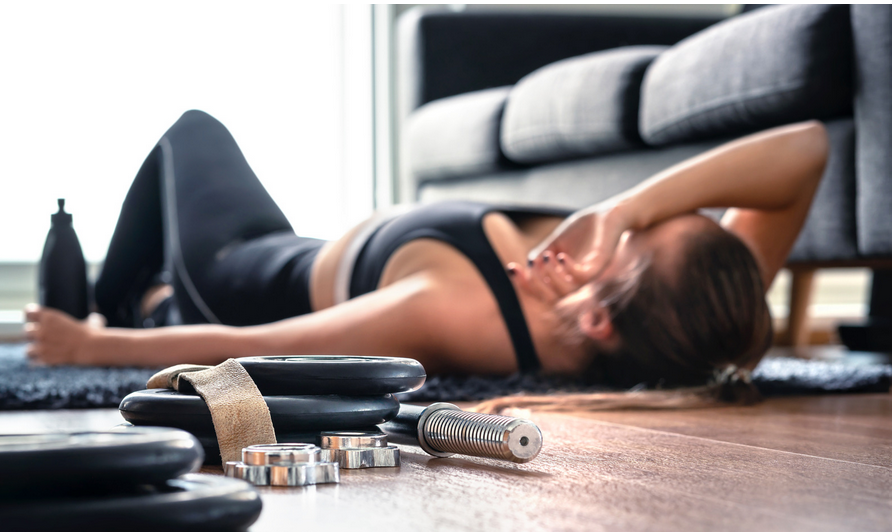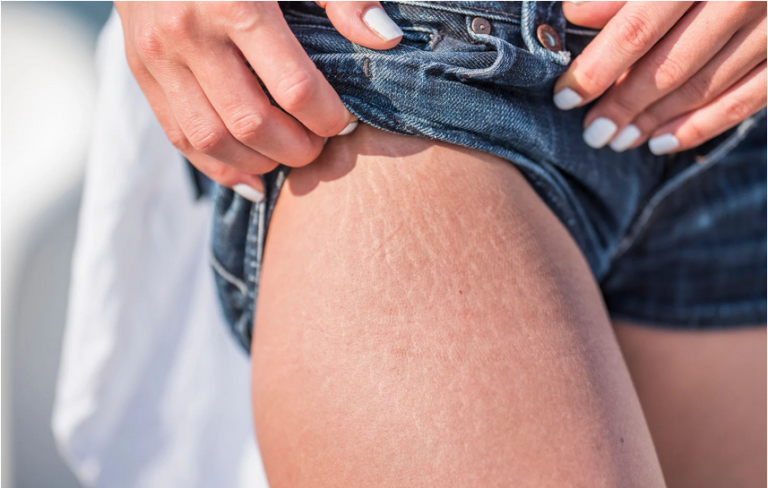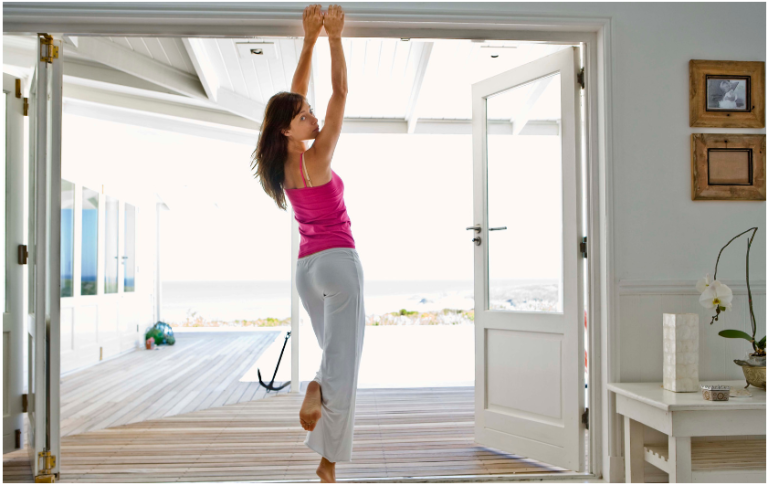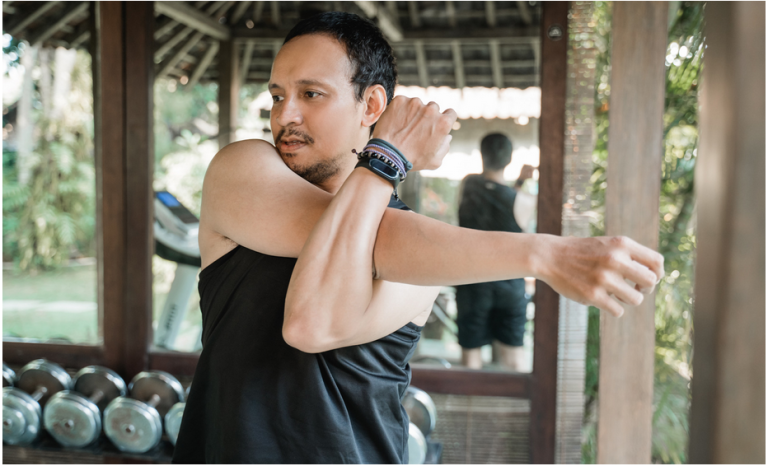
Why Do I Feel More Stiff After Stretching? Tips to Fix it | Health Flexibility 101

Have you ever felt more tight and stiff after stretching than before? You may think stretching is supposed to make you more flexible and relaxed, but sometimes, it can have the opposite effect. Why does this happen, and what can you do to prevent it? In this blog post, you will learn about the benefits of stretching and exercise for improving flexibility.
Key Takeaways
- The science behind stretching and how it affects your muscles
- People make common mistakes when stretching, such as bouncing or jerking, and they need to know how to avoid them to prevent muscles from feeling sore after stretching.
- The best stretching techniques and strategies for different body parts and situations, especially when muscles feel tight after stretching.
- The benefits of consistent stretching and how to make it a habit
By the end of this blog post, you will better understand why you feel tighter after stretching and how to stretch effectively and safely to improve your flexibility and well-being.
What is Stretching and How Does it Work?

Stretching is lengthening your muscles and other soft tissues, such as tendons and ligaments, to increase your range of motion and flexibility. When you stretch, you gently force your muscle fibres, causing them to elongate and relax. This can help reduce muscle tension, improve blood flow, and prevent injury.
However, stretching is only sometimes a simple process. Many factors can affect how your muscles respond to stretching, such as age, genetics, activity level, posture, hydration, and temperature. Sometimes, stretching can have the opposite effect of what you intend and make you feel tight and stiff instead of more flexible and relaxed. Why does this happen?
Why Do You Feel Tighter After Stretching?
There are several possible reasons why you may feel tighter after stretching, depending on the type, duration, and intensity of your stretching and the condition of your muscles and joints. Here are some of the most common causes of feeling tighter after stretching:
You are stretching too hard or too long
If you stretch beyond your comfortable limit or hold a stretch for too long, you may cause micro-tears in your muscle fibres, leading to inflammation, pain, and stiffness. This is especially true if you are not used to stretching, or if you are stretching a cold or injured muscle. A good rule of thumb is to stretch only to the point of mild discomfort and hold each stretch for no more than 30 seconds.
You are doing the wrong type of stretching
There are two main types of stretching: static and dynamic, both beneficial for those looking to get more flexible. Static stretching involves holding a fixed position for some time, while dynamic stretching involves moving your joints through their full range of motion. Static stretching is more effective for increasing your flexibility, while dynamic stretching is more effective for warming up your muscles and preparing them for activity.
If you do static stretching before a workout, you may reduce your muscle strength and power and increase your risk of injury. If you do dynamic stretching after a workout, you may need to relax your muscles and release the tension sufficiently. The best way to use both types of stretching is to do dynamic stretching before a workout and static stretching after a workout.
You are stretching the wrong muscles
If they still feel tight after stretching, indicating a need to reassess your stretching routine. Sometimes, the muscles that feel tight do not need to be stretched. For example, if you have tight hamstrings, stretching them may help, but the problem may be in your hip flexors, which are the muscles that bend your hip joint. If your hip flexors are tight, they may pull your pelvis forward, causing your hamstrings to feel tight and stiff. In this case, stretching your hip flexors may be more beneficial than stretching your hamstrings.
Similarly, if you have tight shoulders, you may need to stretch your chest and upper back muscles, which can affect your shoulder posture and mobility. The key is to identify the root cause of your tightness and stretch the muscles responsible for it.
You have a chronic pain condition
Suppose you suffer from a chronic pain condition, such as fibromyalgia, arthritis, or nerve damage. In that case, you may have increased sensitivity and inflammation in your muscles and joints, making you feel tight and stiff after stretching. In this case, stretching may not relieve your pain, and you may need to consult a doctor or a physical therapist for more specific and personalized treatment. However, stretching can still be beneficial for improving your blood circulation, reducing stress, and enhancing your mood, as long as you do it gently and carefully and avoid overstretching or aggravating your condition.
How to Stretch Effectively and Safely
Now that you know why you feel tighter after stretching, how can you stretch more effectively and safely to improve your flexibility and well-being? Here are some tips and techniques that you can use to stretch better and feel better:
1. Warm up before stretching
Before stretching, warm up your muscles and joints with light cardio, such as walking, jogging, cycling, or skipping. This will increase your blood flow, oxygen delivery, and temperature, making your muscles more pliable and responsive to stretching. A warm-up can also prevent injury and improve your performance. Aim for at least 10 minutes of warm-up before stretching.
2. Do dynamic stretching before a workout
Dynamic stretching involves moving your joints through their full range of motion, such as swinging your arms, legs, and torso or doing lunges, squats, and twists. Dynamic stretching can help you prepare your muscles and joints for the activity you are about to do and improve your coordination, balance, and agility. Dynamic stretching can also prevent muscle stiffness and soreness after a workout. Aim for at least 10 minutes of dynamic stretching before a workout, focusing on the muscles and joints you will use the most to prevent them from feeling tight after stretching.
3. Do static stretching after a workout
Static stretching involves holding a fixed position for some time, such as touching your toes, pulling your arm across your chest, or bending your knee behind your back. Static stretching can help you increase your flexibility, relax your muscles, and release the tension and lactic acid that build up during a workout. Static stretching can also improve your posture, alignment, and range of motion. Aim for at least 10 minutes of static stretching after a workout, focusing on the muscles and joints you worked the most, especially to relieve soreness and prevent muscles from feeling tight after stretching.
5. Use proper technique
When stretching, make sure to use proper technique and form and avoid common mistakes that can reduce the effectiveness of your stretching or cause injury. Some of the common mistakes are:
- Bouncing or jerking while stretching, which can cause muscle damage and pain, is a common mistake when trying to alleviate muscles that still feel tight.
- Holding your breath while stretching, which can increase your blood pressure and tension
- Forcing or overstretching your muscles can cause inflammation and stiffness, especially in individuals who still feel tight after stretching.
- Stretching a cold or injured muscle which can worsen the condition and delay the healing process
- Stretching only one side of your body can create imbalance and asymmetry.
To avoid these mistakes, follow these guidelines:
- Move slowly and smoothly while stretching, and avoid sudden or rapid movements.
- Breathe deeply and regularly while stretching, and exhale as you go deeper into the stretch.
- Stretch only to mild discomfort, and listen to your body’s signals and feedback.
- Warm up your muscles and joints before stretching, and avoid stretching if you have any pain or inflammation.
- Stretch both sides of your body equally, and maintain a balanced and symmetrical posture.
6. Customize your stretching routine
There is no one-size-fits-all stretching routine that works for everyone. Your stretching needs and preferences may vary depending on age, fitness level, goals, activities, and personal factors. Therefore, it is important to customize your stretching routine to suit your specific needs and preferences and to adjust it as you progress and change. Some of the factors that you can consider when customizing your stretching routine are:
- The stretching that you prefer and enjoy, such as yoga, pilates, tai chi, or dance
- The frequency and duration of your stretching, such as daily, weekly, or monthly, and for how long each time
- The intensity and difficulty of your stretching, such as easy, moderate, or hard, and how much you challenge yourself
- The body parts and muscles that you want to focus on, such as your legs, arms, back, or neck
- The time and place of your stretching, such as in the morning, evening, or before bed, and at home, gym, or outdoors
By customizing your stretching routine, you can make it more enjoyable, effective, and sustainable and achieve your flexibility and well-being goals.
The Benefits of Consistent Stretching
Stretching is a process that you do once in a while. You must practice stretching consistently and regularly to reap its benefits and maintain its effects. Some of the benefits of consistent stretching are:
- Improved flexibility and range of motion, which can enhance your mobility, agility, and performance
- Reduced muscle tension and tightness, which can relieve your pain, stiffness, and soreness
- Increased blood circulation and oxygen delivery, which can nourish your muscles and tissues and speed up your recovery
- Improved posture and alignment can prevent or correct musculoskeletal imbalances and dysfunctions, often arising from muscles that still feel tight after stretching.
- Reduced stress and anxiety, which can calm your mind, body, and emotions
- Enhanced mood and self-esteem, which can boost your confidence, motivation, and happiness
- Increased creativity and productivity, which can improve your performance, learning, and problem-solving
- Prevention or reduction of injury can protect your health, wellness, and longevity and is crucial for those who may feel sore after stretching. These are just some of the benefits of consistent stretching, but there are many more that you can discover and experience for yourself. Stretching is good not only for your body but also for your mind and soul.
Summary and Conclusion
In this blog post, we have learned why you may feel tighter after stretching and how to stretch effectively and safely to improve your flexibility and well-being. Here are some of the key points to remember:
- Stretching is lengthening your muscles and other soft tissues to increase your range of motion and flexibility.
- Stretching can have different effects on your muscles, depending on the type, duration, and intensity of your stretching and the condition of your muscles and joints.
- You may feel tighter after stretching if you stretch too hard or too long, do the wrong type of stretching, stretch the wrong muscles, or have a chronic pain condition.
- To stretch effectively and safely, you should warm up before stretching, do dynamic stretching before a workout, do static stretching after a workout, use proper technique and form, and customize your stretching routine.
- Consistent stretching can benefit your flexibility, well-being, and quality of life.
We hope this blog post has helped you understand why you feel tighter after stretching and how to stretch better. Stretching is a simple and powerful habit you can practice regularly to improve your physical, mental, and emotional health. So, what are you waiting for? Start stretching today and enjoy the benefits! 🙌
Thank you for reading this blog post on the importance of exercise and stretching. If you found it helpful, please share it with your friends and family and leave a comment below. We would love to hear from you and answer any questions you may have. Also, don’t forget to subscribe to our newsletter for more tips and tricks on improving your flexibility and well-being. Happy stretching! 😊



